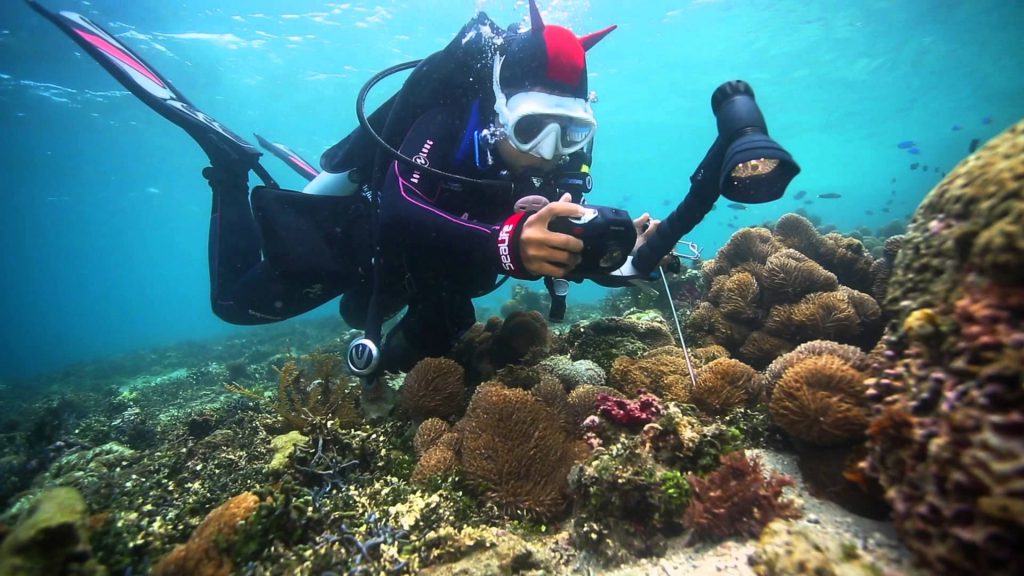This is your long waited diving holiday in Bali. Of course, you want to take nice pictures just like what you see on the internet. Not every day you can get absorbed in the world of blue, swimming with a vast array of fishes around you. Surely, you want to revive the colorful corals, shining brightly in contrast with the blue sea, and show it to your loved ones.

Taking underwater photos, however, could be quite challenging. You will be floating deep in the sea, and your arm will be the only thing where the camera rests. And with a totally different situation than the land above, you need to special equipment to produce great and quality underwater photos.
The Camera
Use waterproof cameras to snap your aquatic adventure. Some cameras have limits of depth, some can go with you for as deep as 30m below the sea. Most underwater cameras are also designed to be shock-proof and freeze-proof to tackle the tides and temperature. If you are going extra deep, it may be worth to take crush-proof cameras as the deeper you go, the higher the pressure is. For extra protection, take underwater housing, a water-proof casing to further seal your camera from the water.
The Lenses
What sense to bring will be hugely affected by your dive purpose and location of your diving. Some diving sites clearly state opportunity for macro photography, means that it’s best to bring macro lenses down. A macro lens is perfect if you are more interested to capture tiny sea creatures, such as the famous pink pygmy seahorses in Amed, the ever-curious mantis shrimp, or the enchanting nudibranchs shining in their eclectic color.
If you want to capture the wide array of coral reefs and wandering aquatic life in general, then wide angle and fisheye lenses are for you. These lenses are also great to take the whole body of a large animal, such as sharks, the famous manta rays, and even sunfish. Wide lens is also advised if you want to go wreck diving and capturing its whole diving.
The Flash & Strobes
Do you know that water absorbs long wavelength light, such as red, orange, and yellow? That’s why the ocean looks blue, as blue has a shorter wavelength. That’s also the reason why flash is really important if you want to bring out the true color of coral reefs and fishes. Strong flash is especially needed when you go deeper to the sea, where most colors are absorbed. You can bring external strobe or flash to add color and avoid backscatter that sometimes appears when you are using internal flash.
Snoot
Here’s the secret for focused lighting under the water. Sometimes, the light from your strobes may appear too strong, and you gonna need snoot to reduce the beam angle from your strobes. Attached to the end of the strobe, snoot will put the spotlight on you underwater object without overly light up the surrounding area. Plus, snoot can minimize ba